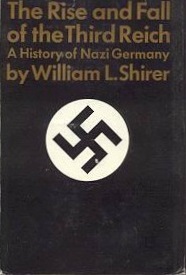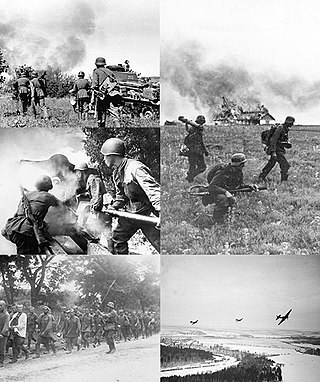
Operation Barbarossa was the invasion of the Soviet Union by Nazi Germany and many of its Axis allies, starting on Sunday, 22 June 1941, during World War II. It was the largest and costliest land offensive in human history, with around 10 million combatants taking part, and over 8 million casualties by the end of the operation.
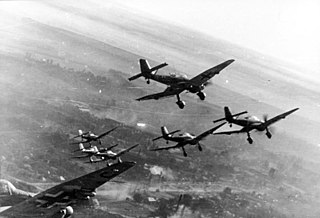
World War II or the Second World War was a global conflict between two coalitions: the Allies and the Axis powers. Nearly all the world's countries—including all the great powers—participated, with many investing all available economic, industrial, and scientific capabilities in pursuit of total war, blurring the distinction between military and civilian resources. Tanks and aircraft played major roles, with the latter enabling the strategic bombing of population centres and delivery of the only two nuclear weapons ever used in war. World War II was the deadliest conflict in history, resulting in 70 to 85 million fatalities, more than half of which were civilians. Millions died in genocides, including the Holocaust of European Jews, and by massacres, starvation, and disease. Following the Allied powers' victory, Germany, Austria, Japan, and Korea were occupied, and war crimes tribunals were conducted against German and Japanese leaders.

The Axis powers, originally called the Rome–Berlin Axis and also Rome–Berlin–Tokyo Axis, was a military coalition that initiated World War II and fought against the Allies. Its principal members were Nazi Germany, Fascist Italy and the Empire of Japan. The Axis were united in their far-right positions and general opposition to the Allies, but otherwise lacked comparable coordination and ideological cohesion.
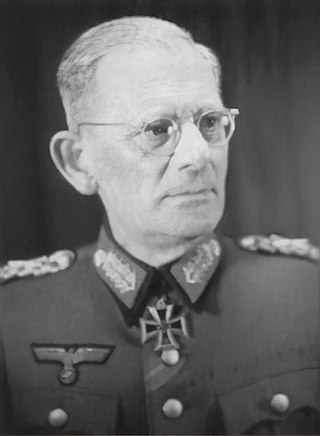
Maximilian Maria Joseph Karl Gabriel Lamoral Reichsfreiherr von und zu Weichs an der Glon was a German Generalfeldmarschall in the Wehrmacht of Nazi Germany during World War II.

Western betrayal is the view that the United Kingdom, France, and sometimes the United States failed to meet their legal, diplomatic, military, and moral obligations with respect to the Czechoslovak and Polish states during the prelude to and aftermath of World War II. It also sometimes refers to the treatment of other Central and Eastern European states at the time.
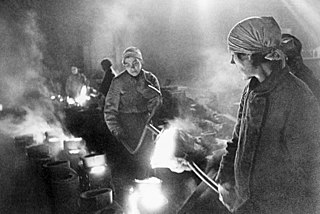
Military production during World War II was the production or mobilization of arms, ammunition, personnel and financing by the belligerents of the war, from the occupation of Austria in early 1938 to the surrender and occupation of Japan in late 1945.

The Mediterranean and Middle East Theatre was a major theatre of operations during the Second World War. The vast size of the Mediterranean and Middle East theatre saw interconnected naval, land, and air campaigns fought for control of the Mediterranean, North Africa, the Horn of Africa, the Middle East and Southern Europe. The fighting started from 10 June 1940, when Italy declared war on United Kingdom and France, until 2 May 1945 when all Axis forces in Italy surrendered. However, fighting would continue in Greece – where British troops had been dispatched to aid the Greek government – during the early stages of the Greek Civil War.

The term "home front" covers the activities of the civilians in a nation at war. World War II was a total war; homeland military production became vital to both the Allied and Axis powers. Life on the home front during World War II was a significant part of the war effort for all participants and had a major impact on the outcome of the war. Governments became involved with new issues such as rationing, manpower allocation, home defense, evacuation in the face of air raids, and response to occupation by an enemy power. The morale and psychology of the people responded to leadership and propaganda. Typically women were mobilized to an unprecedented degree.

The Allies, formally referred to as the United Nations from 1942, were an international military coalition formed during World War II (1939–1945) to oppose the Axis powers. Its principal members by the end of 1941 were the "Big Four" – the United Kingdom, United States, Soviet Union, and China.
In World War II, many governments, organizations and individuals collaborated with the Axis powers, "out of conviction, desperation, or under coercion." Nationalists sometimes welcomed German or Italian troops they believed would liberate their countries from colonization. The Danish, Belgian and Vichy French governments attempted to appease and bargain with the invaders in hopes of mitigating harm to their citizens and economies.

Gerhard Ludwig Weinberg is a German-born American diplomatic and military historian noted for his studies in the history of Nazi Germany and World War II. Weinberg is the William Rand Kenan, Jr. Professor Emeritus of History at the University of North Carolina at Chapel Hill. He has been a member of the history faculty at UNC-Chapel Hill since 1974. Previously he served on the faculties of the University of Michigan (1959–1974) and the University of Kentucky (1957–1959).
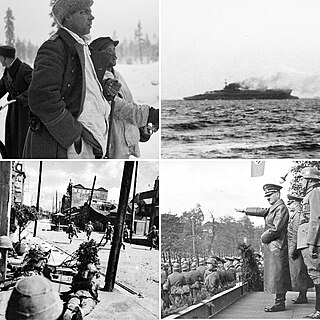
This is a timeline of events of World War II in 1939 from the start of the war on 1 September 1939. For events preceding September 1, 1939, see the timeline of events preceding World War II.

When the United Kingdom declared war on Nazi Germany in September 1939 at the start of World War II, it controlled to varying degrees numerous crown colonies, protectorates, and India. It also maintained strong political ties to four of the five independent Dominions—Australia, Canada, South Africa, and New Zealand—as co-members of the British Commonwealth. In 1939 the British Empire and the Commonwealth together comprised a global power, with direct or de facto political and economic control of 25% of the world's population, and of 30% of its land mass.

The Wehrmacht were the unified armed forces of Nazi Germany from 1935 to 1945. It consisted of the Heer (army), the Kriegsmarine (navy) and the Luftwaffe. The designation "Wehrmacht" replaced the previously used term Reichswehr and was the manifestation of the Nazi regime's efforts to rearm Germany to a greater extent than the Treaty of Versailles permitted.

The Soviet offensive plans controversy was a debate among historians in the late 20th and early 21st centuries as to whether Joseph Stalin had planned to launch an attack against Nazi Germany in the summer of 1941. The controversy began with Soviet defector Viktor Suvorov with his 1988 book Icebreaker: Who started the Second World War? In it, he claimed that Stalin used Nazi Germany as a proxy to attack Europe.

Military intelligence on the V-1 and V-2 weapons developed by the Germans for attacks on the United Kingdom during the Second World War was important to countering them. Intelligence came from a number of sources and the Anglo-American intelligence agencies used it to assess the threat of the German V-weapons.

This is a list of books about Nazi Germany, the state that existed in Germany during the period from 1933 to 1945, when its government was controlled by Adolf Hitler and his National Socialist German Workers' Party. It also includes some important works on the development of Nazi imperial ideology, totalitarianism, German society during the era, the formation of anti-Semitic racial policies, the post-war ramifications of Nazism, along with various conceptual interpretations of the Third Reich.
The diplomatic history of World War II includes the major foreign policies and interactions inside the opposing coalitions, the Allies of World War II and the Axis powers, between 1939 and 1945.
This is a Bibliography of World War II battles and campaigns in Europe, North Africa and the Middle East. It aims to include the major theaters, campaigns and battles of the European theater of World War II. It is part of Wikipedia's larger effort to document the Bibliography of World War II. Its counterpart for the Asia-Pacific theater is the Bibliography of World War II battles and campaigns in East Asia, South East Asia and the Pacific.
This is a Bibliography of World War II memoirs and autobiographies. This list aims to include memoirs written by participants of World War II about their wartime experience, as well as larger autobiographies of participants of World War II that are at least partially concerned with the author's wartime experience. Works on this list should be all those primary accounts of World War II wartime experience intended for publication. The list does not aim to include diaries, private letter collections or transcripts of private conversations. It also should not include any prewar writings, setting the earliest dates of publication available for this list at 1937, 1939 and 1941, depending on geographic context.
